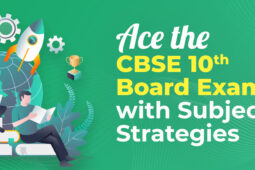How to Blend a Strong Learning Theory with Gamification
Online learning is continuously changing and evolving. Every day, there are new ways in which learners and educators can interact with each other online. Today, even artificial intelligence is changing our education system. So, we must create engaging lessons by blending learning theory with gamification. Here’s our guide on incorporating game theory into your online classes.
Blending a Strong Learning Theory with Gamification
1. List Your Learning Objectives
 Before you start, you must identify your learning objectives for the course. You could ask yourself a few simple questions. What would you like learners to know at the end of the learning experience? Is the content complex? Will it be better served by the use of game scenarios? What level of retention and proficiency would you like your learners to achieve? The answers will help you understand how much gamification you need. Once you have your objectives, you can create your course accordingly.
Before you start, you must identify your learning objectives for the course. You could ask yourself a few simple questions. What would you like learners to know at the end of the learning experience? Is the content complex? Will it be better served by the use of game scenarios? What level of retention and proficiency would you like your learners to achieve? The answers will help you understand how much gamification you need. Once you have your objectives, you can create your course accordingly.
2. Add a Game Structure
You must decide whether you want to add a game to your course or make use of a simple game theory. Both will work well, but you should choose what you’d prefer based on the subject and your objectives. Even if you’re creating a simple game, you must ensure you have some version of the following elements:
• Goals
• Rules
• Decision Opportunities
• Mechanics
• Feedback
3. Understand Your Constraints

As an educator, you always want to go above and beyond to create engaging online lessons. But, you also need to understand your constraints and work within your limitations. While blending learning theory with gamification, you must use specific authoring tools. You also need to have a well-planned delivery method. Do you have the means to buy everything you need to carry out your vision? The best way to deal with this issue is by figuring out your budget first. You can then prioritise your purchases.
4. Choose Your Gaming Techniques
Now it’s time to create your gaming micro-activities. They should present information to learners before challenging them. Make sure your activities also evaluate each student’s progress. You can choose from a wide range of activities like puzzles, strategy, adventure or simulation. Once you create the micro-activity, ensure it aligns with your learning objectives.
5. Get Feedback

Roll out a pilot of your completed gamification course and ask learners for their thoughts. Make sure you select a diverse group of people to test your lessons. By doing this, you will ensure that your games and lessons are appealing and engaging to most people. After the initial pilot, you should take stock of the comments you’ve received. Make whatever changes you must and then run another trial. Once you start receiving only positive reviews, it’s time to take your course live.
You can easily blend learning theory with gamification with TG Campus. Our easy-to-use platform allows you to create engaging courses quickly and efficiently. At TG Campus, we also follow cyber hygiene practices for safe online learning. The platform has a robust testing mechanism that helps you keep track of every learner’s progress. With TG Campus, online learning is quick, fun and completely safe!














